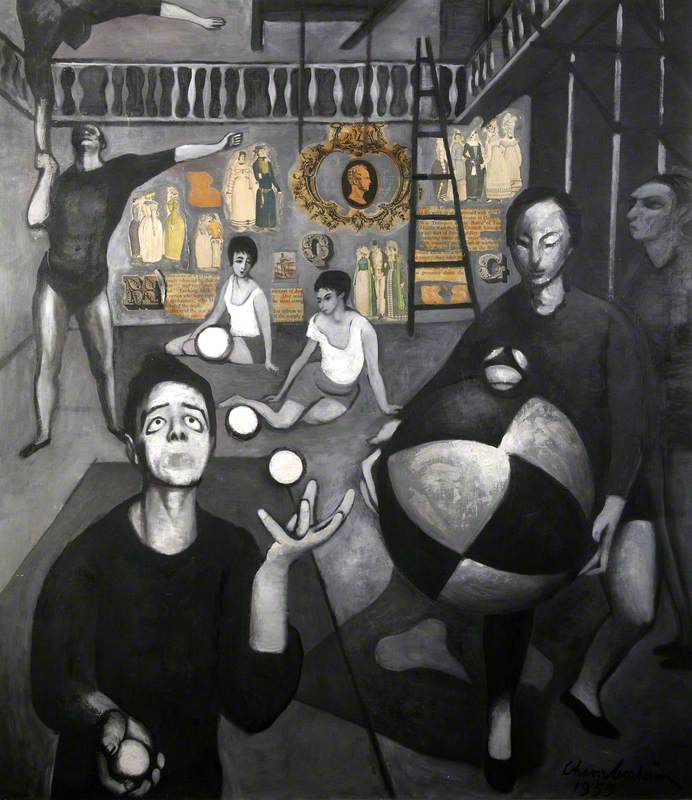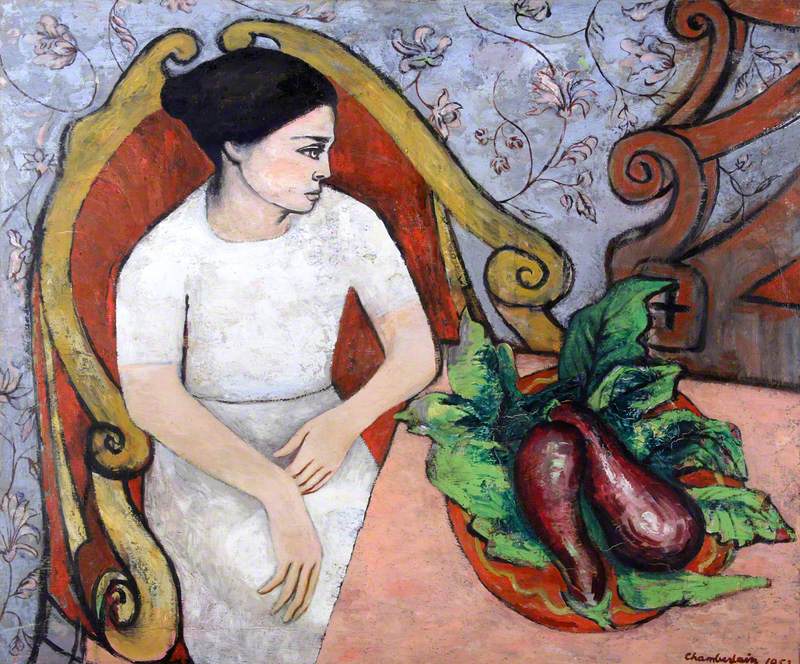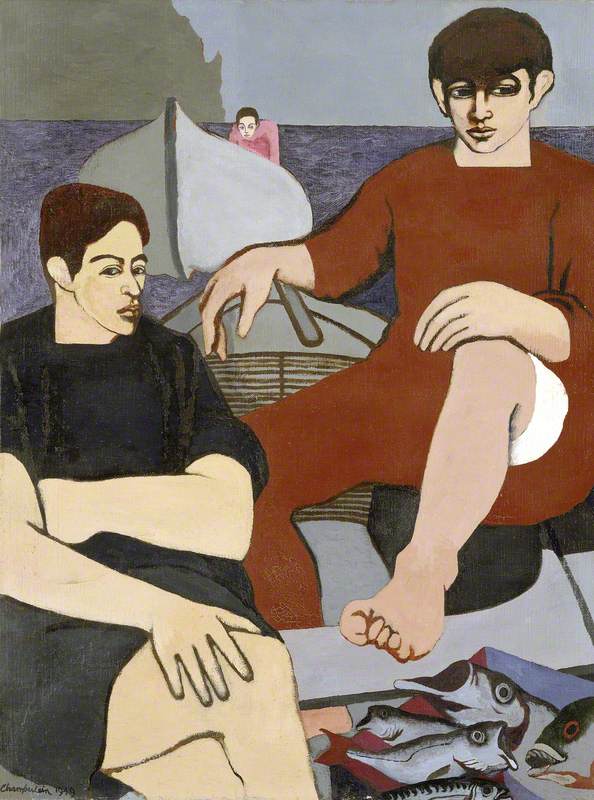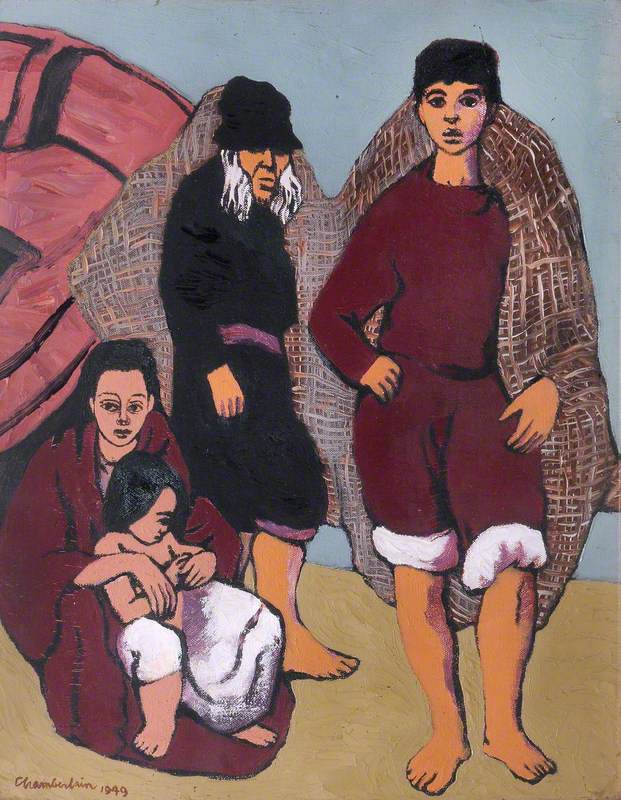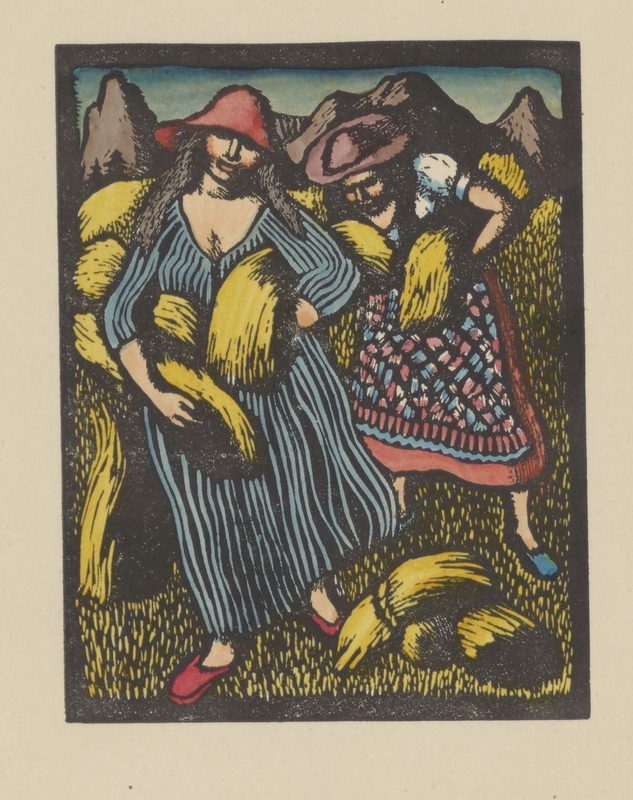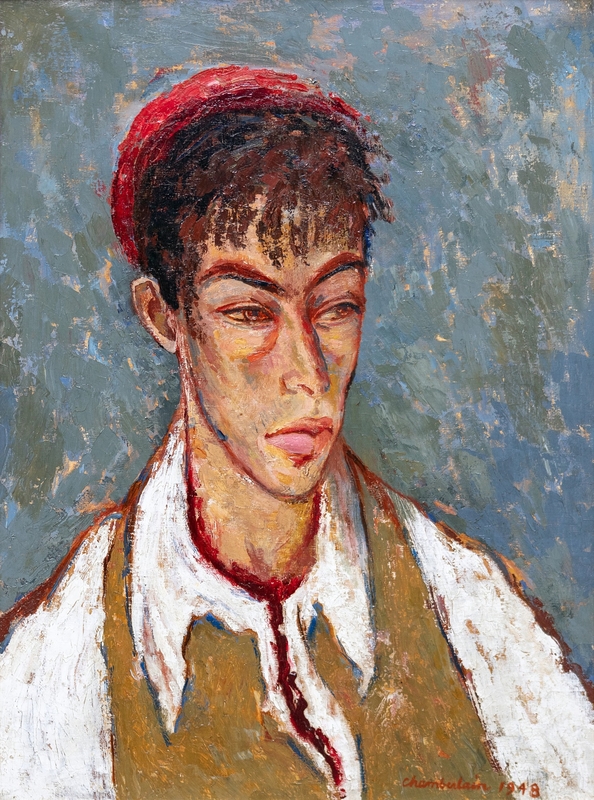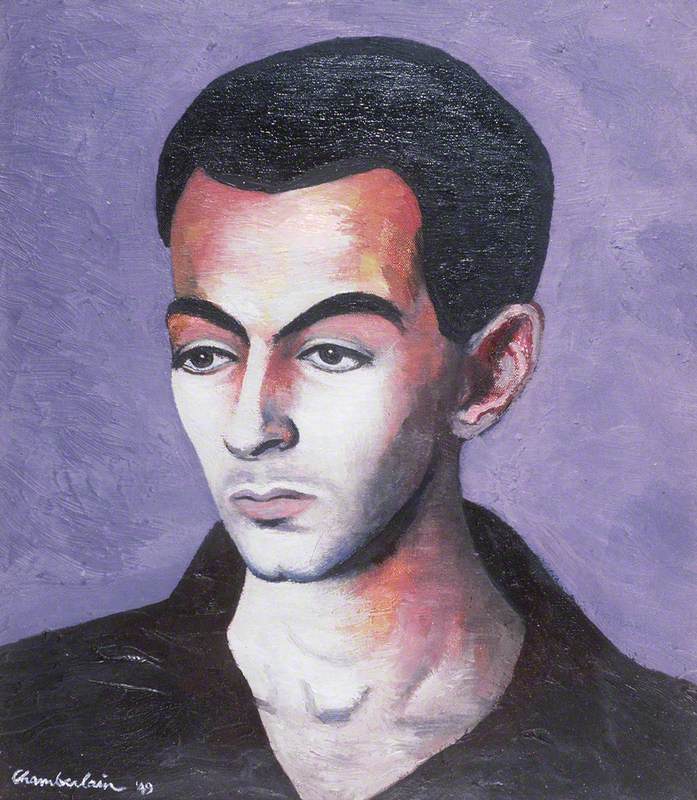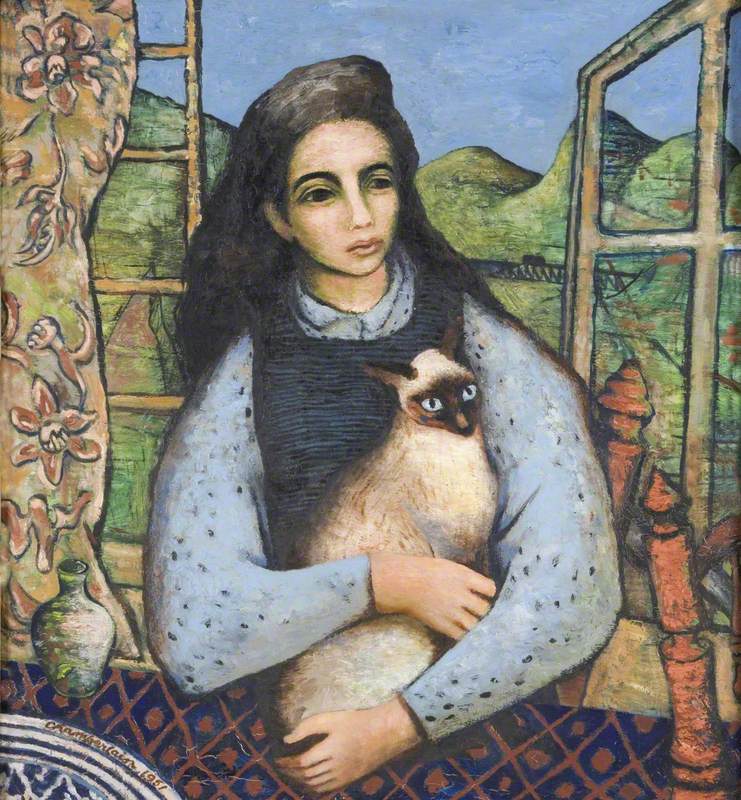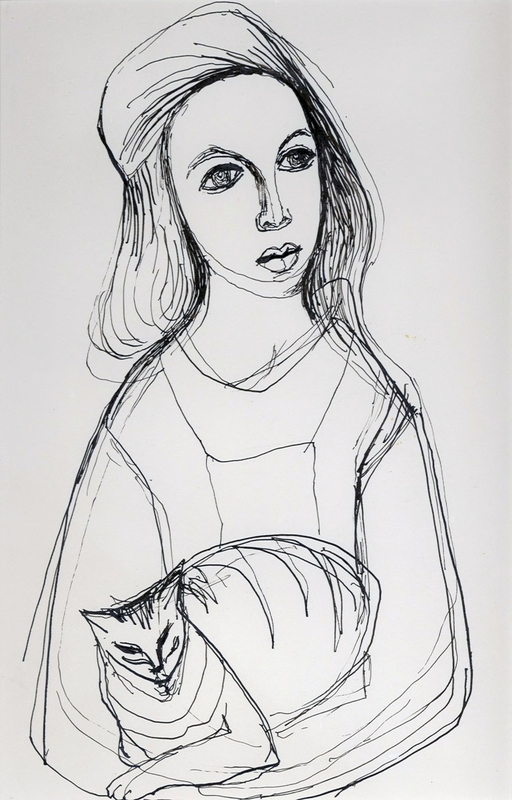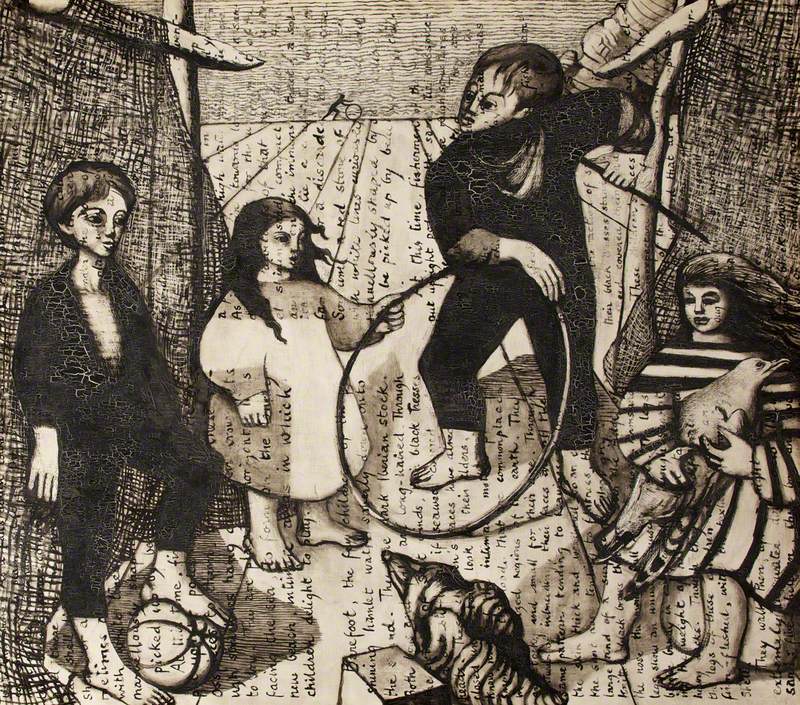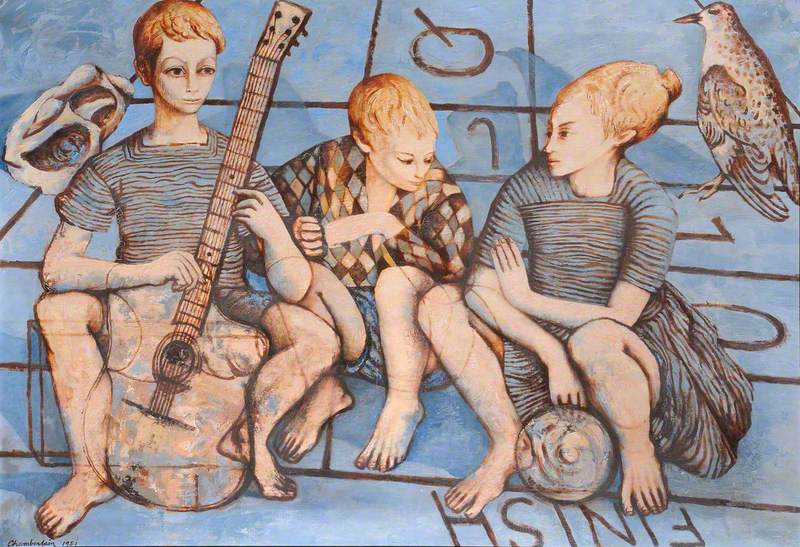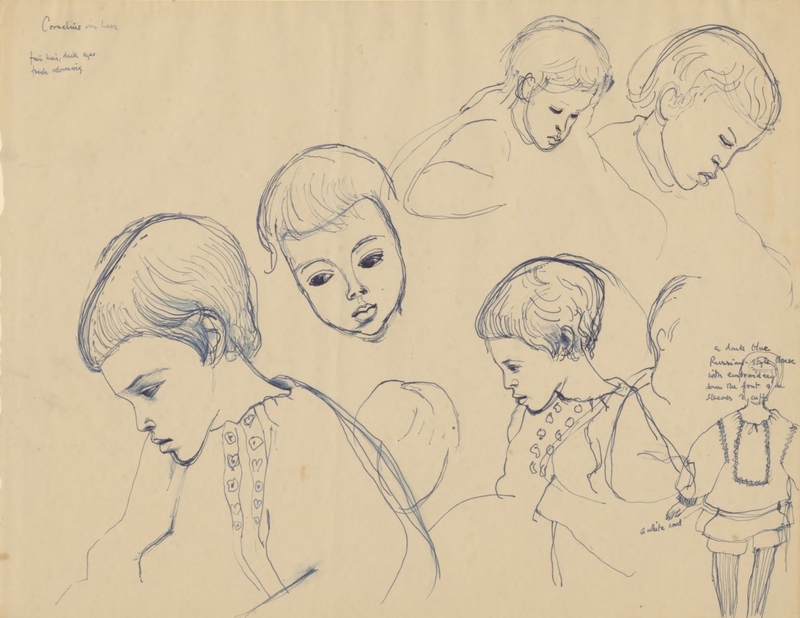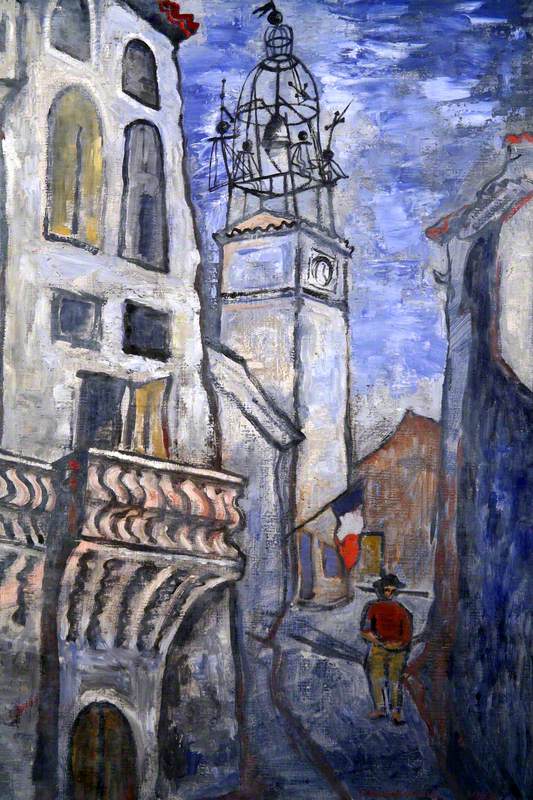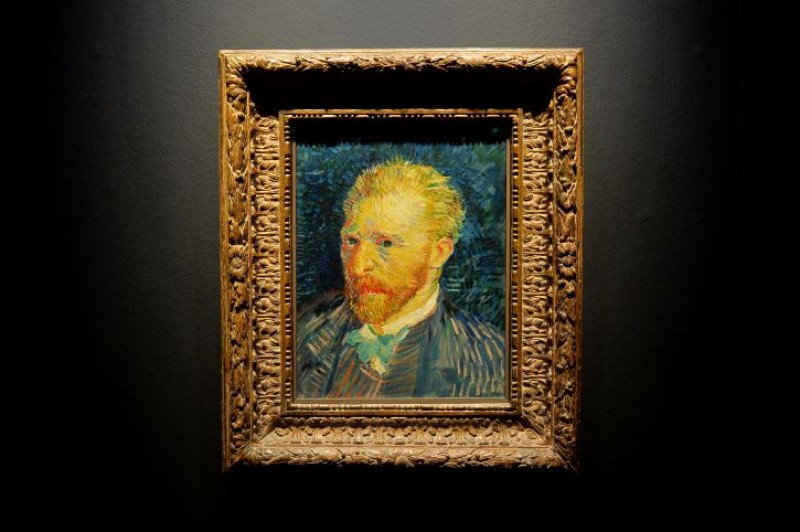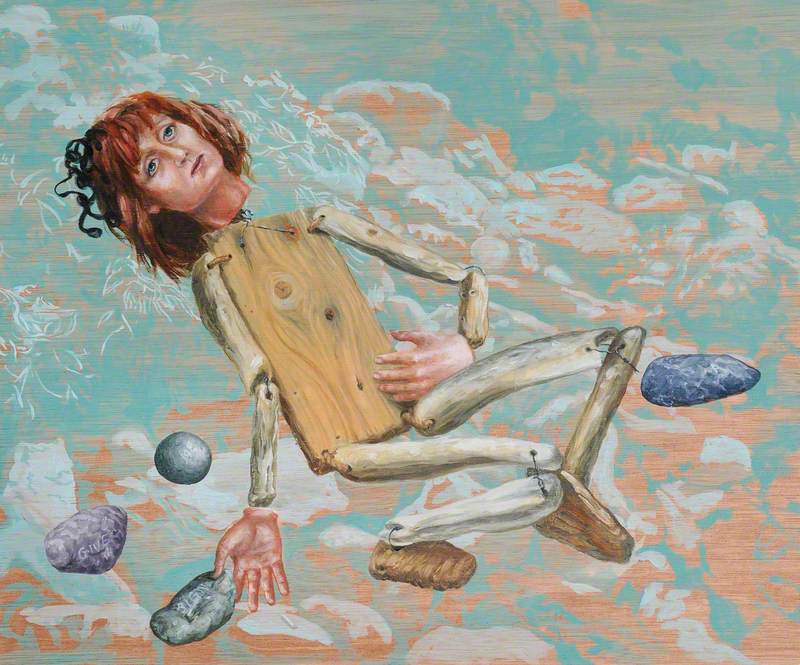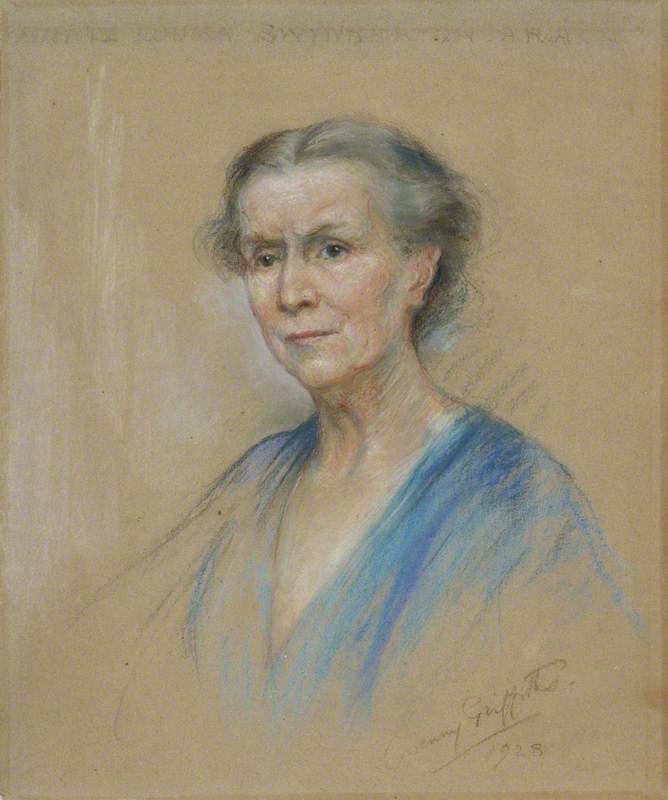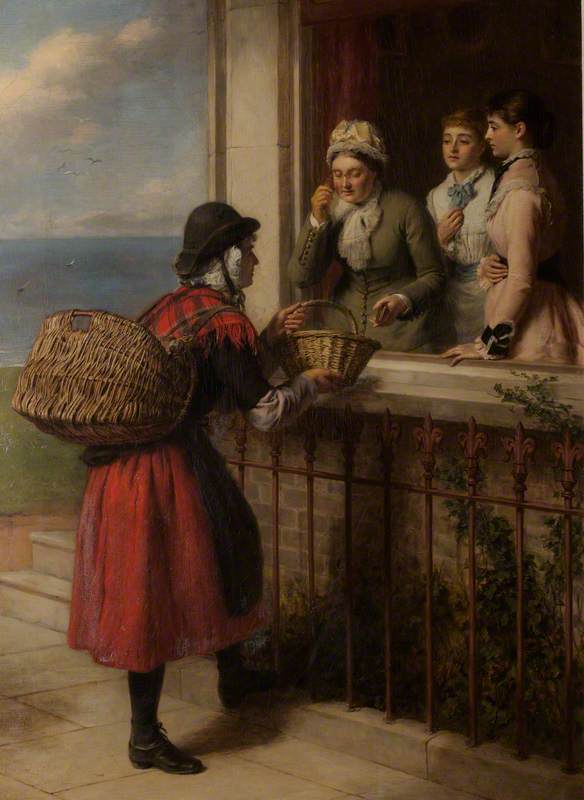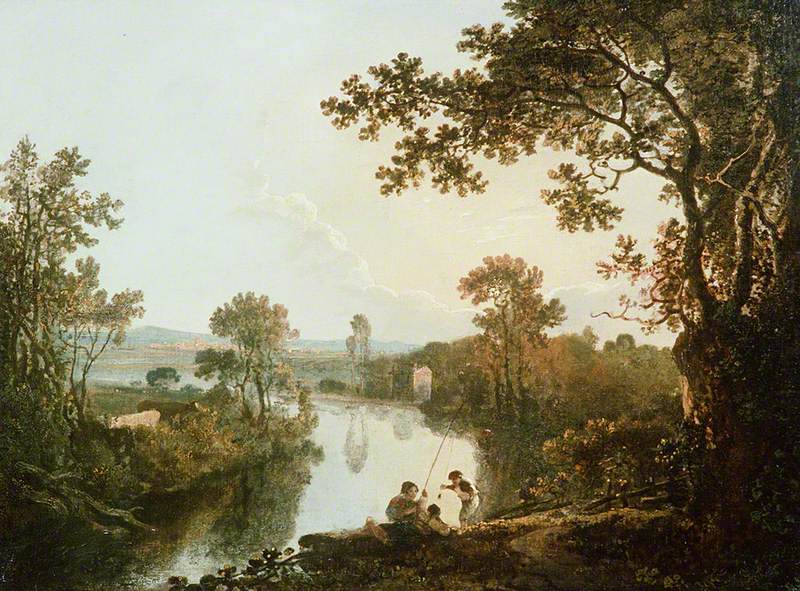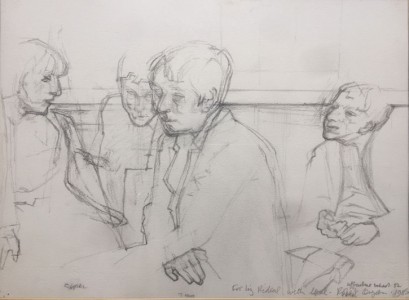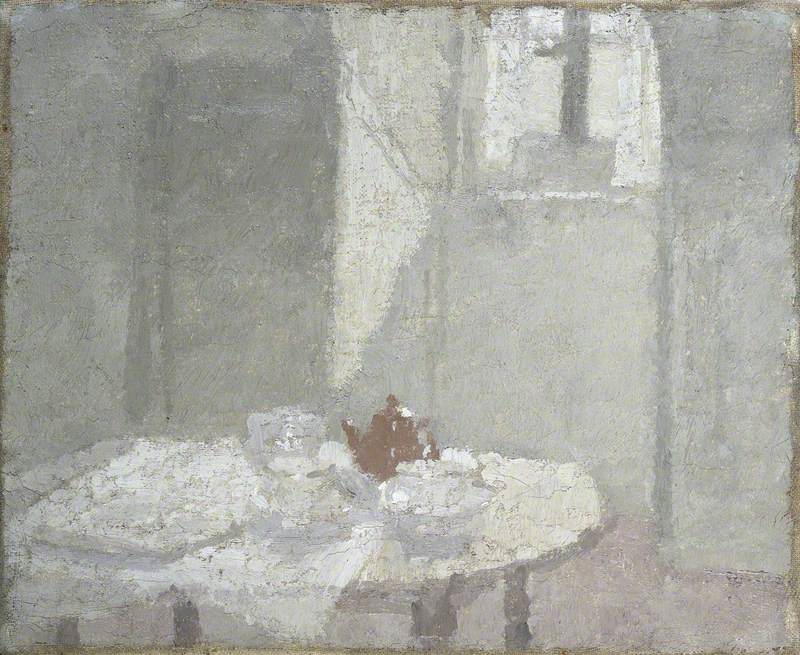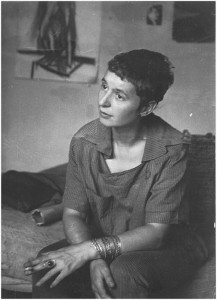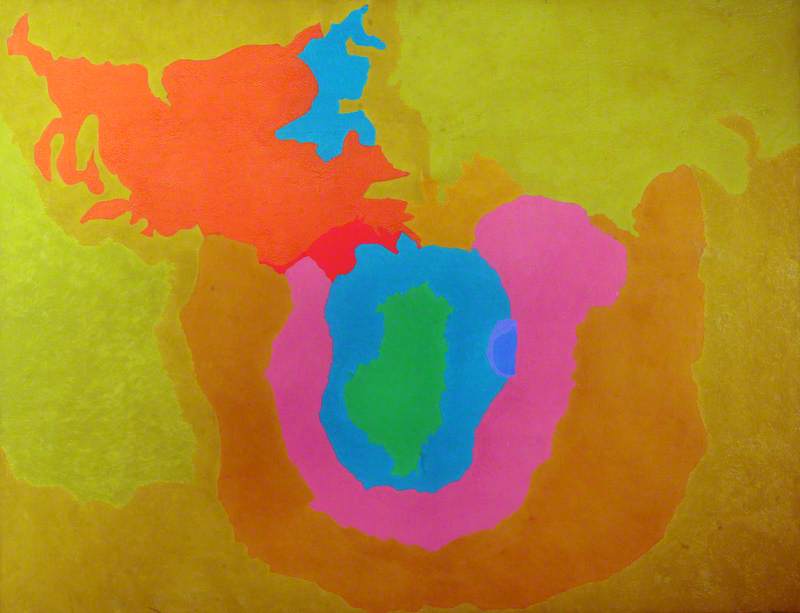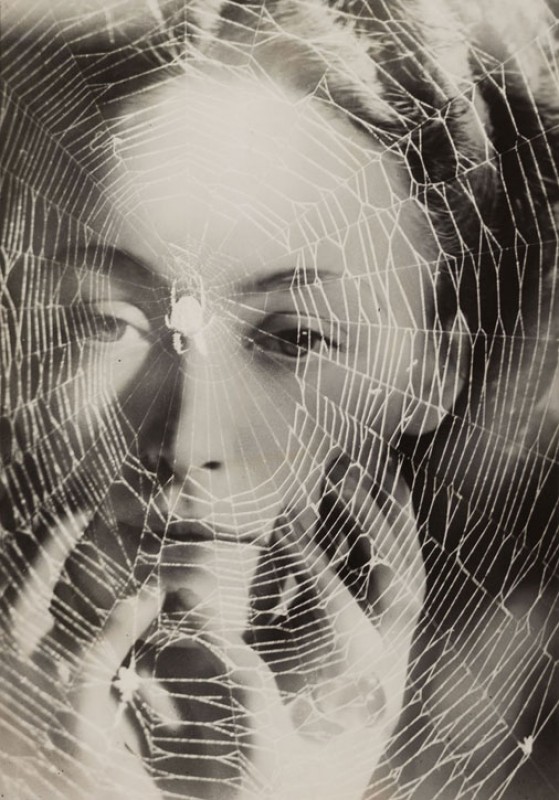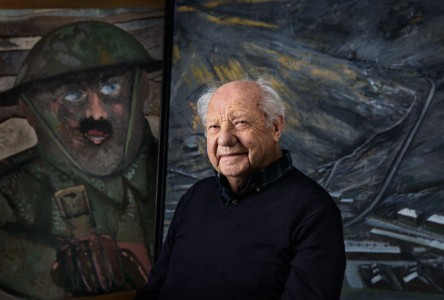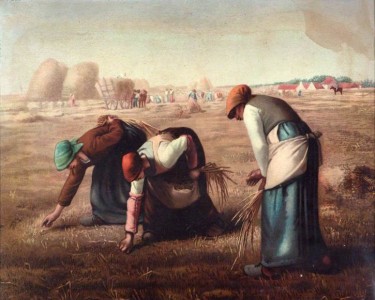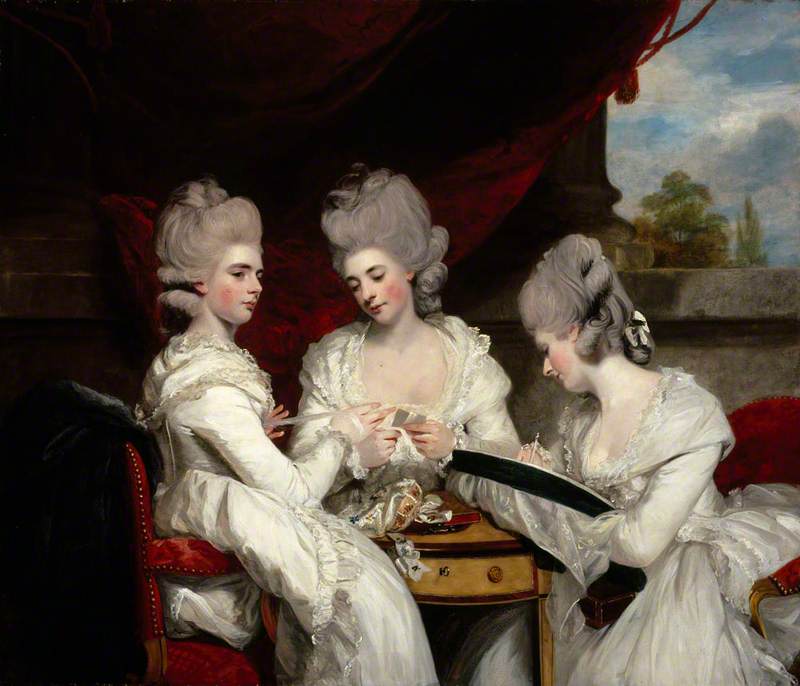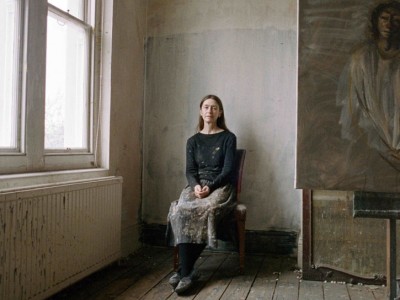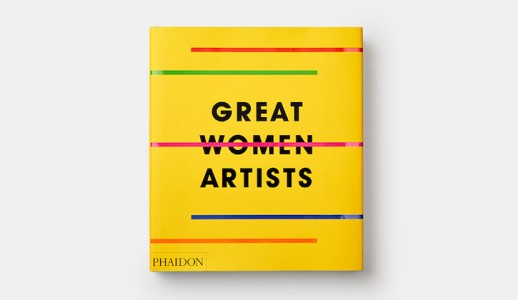From an early age, the artist and writer Brenda Chamberlain (1912–1971) was a prolific keeper of journals and sketchbooks recording the minutiae of her daily life. Although she lived in several different places, she rarely painted landscapes. She drew them in her sketchbooks but did not often develop them into larger works. It was the people in her life that fascinated her the most. She drew them incessantly and they became the subjects for many of her figurative works.
Chamberlain's early paintings were influenced by the traditional way she had been taught at the Royal Academy Schools in London. This is reflected in her life-size self-portrait of 1938, painted very delicately with small brushstrokes. In it, Chamberlain looks directly at the viewer, with the distant Ogwen valley behind her. She is wearing a long maroon dress that she kept for special occasions.
Self Portrait on Garnedd Dafydd
1938
Brenda Chamberlain (1912–1971) 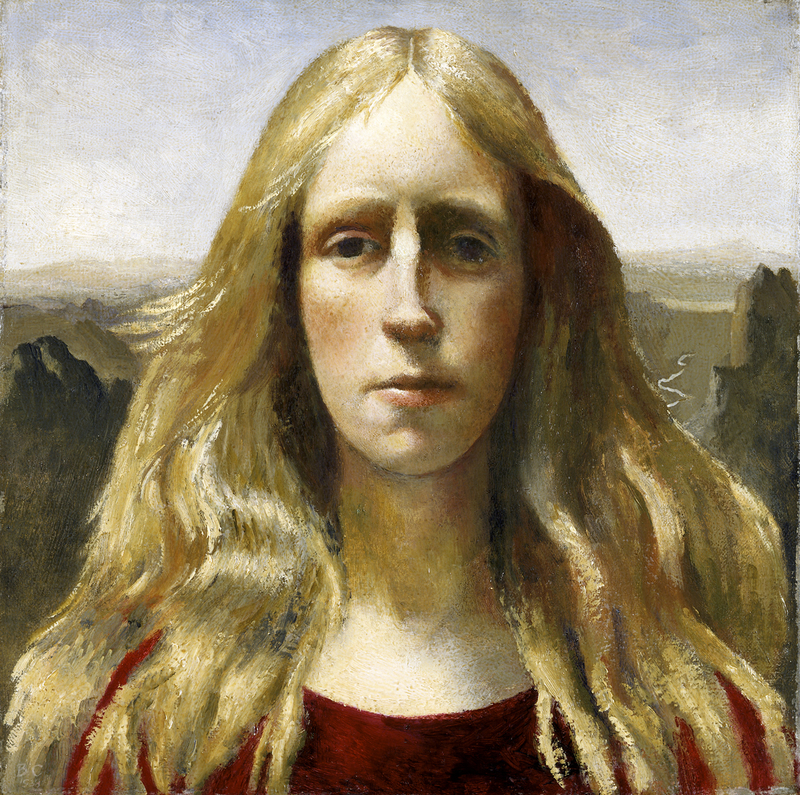
While in London she met fellow artist John Petts, and together they moved to her native north Wales, to Llanllechid, a slate quarrying area in Eryri (Snowdonia). As their cottage was dark and without electricity, all her painting had to be done during daylight hours – either beneath the skylight of an attic bedroom or outdoors.
They had little money and had to make a living so Petts, who had studied typesetting, suggested they acquire a small printing press to create posters, handbills and engraved greetings cards to sell for Christmas, weddings and births. These hand-coloured cards proved very popular, and they produced a wide range of designs based on religious and allegorical themes. To make cutting the printing blocks easier, Chamberlain's figures became more stylised, painted with blocks of patterned colour and sinuous lines. Many of her designs were based on strong women working on the land, like The Harvesters, from the collection at National Library of Wales.
After separating from Petts in 1943, Chamberlain moved to Ynys Enlli – the windswept island of Bardsey off the Llŷn peninsula in north Wales. To make a living, she and her then-partner Jean van de Bilt became fisher-farmers. These years were her most successful and prolific as an artist. She began to exhibit her work in London where she had regular exhibitions at Gimpel Fils Gallery and in 1962 published Tide-Race, a fictionalised account of her stay on Ynys Enlli. Her main artistic inspiration came from the people she lived with on the island. She would paint single portraits as well as groups within imagined settings.
Here is a portrait of Jean van de Bilt wearing his mustard waistcoat and red hat, and another of his friend, Peter Kahn. They were friends of John Petts's younger brother, Peter, and had been regular visitors when Chamberlain lived in Llanllechid. During their visits, there was plenty of time in the evenings to write and make preparatory drawings by the light of the paraffin lamps.
In 1951 Chamberlain won the Gold Medal in Fine Art at the National Eisteddfod of Wales with her painting Girl with a Siamese Cat. Although there was no monetary prize, the Arts Council bought the painting for its permanent Welsh Collection and gifted it to National Museum Wales in 2022. The painting shows her neighbour, Jane Evans, seated with her back against an open window, holding Chamberlain's cat on her lap. The pattern of the curtains and the rim of a plate contrast with the plain blocks of colour of Jane's clothes. Before painting, she would make many preliminary drawings until she was satisfied with the final composition. This example is from STORIEL, Bangor.
Her group paintings of people were often set against imaginary backgrounds – like Children on the Seashore, where a group of children are placed on a vast empty shore. The perspective is exaggerated by lines drawn on the background leading to a vanishing point in the sea. Earlier versions show the drawing made directly onto newspaper. This one has a description of the scene written vertically across the picture.
Children on a Hopscotch Pavement shows a similar composition with three children seated in the foreground against the linear pattern of the ground. The children are contemplative and stocky. The middle boy is framed by the striped garments worn by the other two children.
Chamberlain often chose to leave the island in the winter and stay either in Germany – with her friend, Karl von Laer and his extended family – or in the south of France, where her gallery agent had a house. On these trips, she would often travel with simple art materials and concentrate on making drawings. Here is Karl von Laer's nephew Cornelius wearing his Russian-style blouse.
On a later visit in 1955, Chamberlain made a series of drawings in wax crayon including a drawing of Cornelius's sister, Insea. In her journal, she wrote: 'I persuaded Insea to let me draw her. Reluctantly, she stood for me in a heavy old fur-lined coat, complaining of the excessive heat of the stove. From time to time, she goose-stepped about the carpet, tossing her curls, her arms held stiffly at her sides.'
'Insea von Laer' or 'Insea in Lisabeth's Winter Coat'
1955
Brenda Chamberlain (1912–1971) 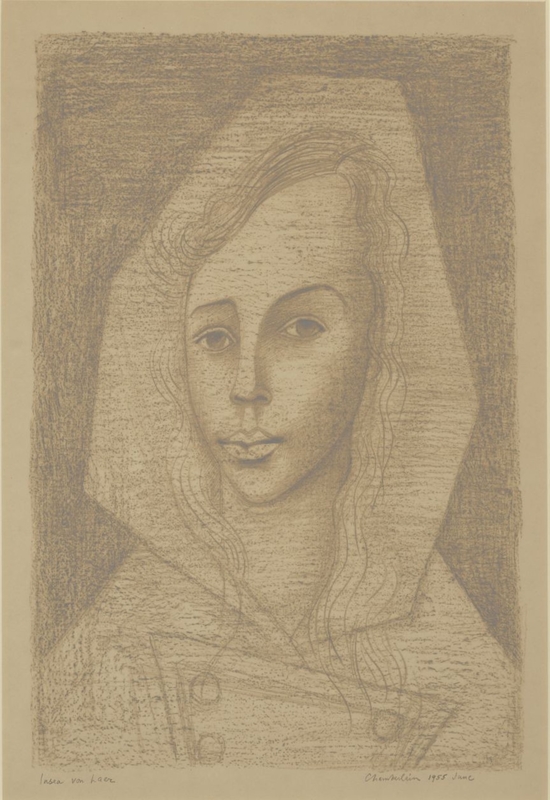
In the south of France, Chamberlain's palette became more colourful with her models placed in elegant and decorative interiors, and she made many drawings of the flamboyant characters she saw at the Carnival in Nice.
Back on Ynys Enlli, she worked hard on preparing her French paintings to exhibit in London. The photographer Edgar Ewart Pritchard visited the island in the 1940s and 1950s and featured her in a short film, Island Artist, in which she is seen exploring the island, writing and painting The Acrobats. He also photographed her with some of her other paintings.
Brenda Chamberlain with 'The Wild Men'
c.1934–1965, photograph by Edgar Ewart Pritchard (1898–1976) 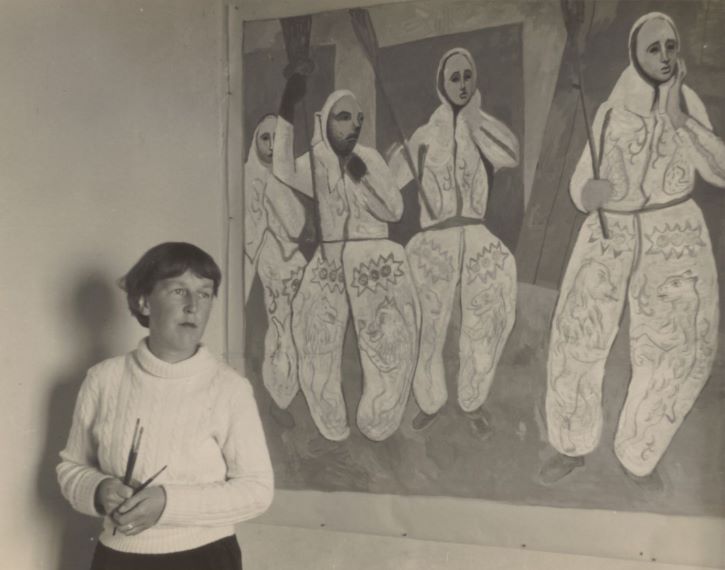
People were the glue of Chamberlain's life. She loved visiting friends and having them stay with her – as she was constantly drawing, they often became her models. Wherever she visited, she would persuade the local people to sit for her as they chatted and if no one else was around, there was always the chance for another self-portrait.
Jill Piercy, exhibition curator and writer
This content was supported by Welsh Government funding
Read more about Brenda Chamberlain's technique and her joy of experimentation in 'Embracing Change', a complementary article co-commissioned with Celf ar y Cyd, as part of CELF the National Contemporary Gallery for Wales
Further reading
Jill Piercy, Brenda Chamberlain – Artist and Writer, Parthian, 2013
Brenda Chamberlain manuscripts at The National Library of Wales
